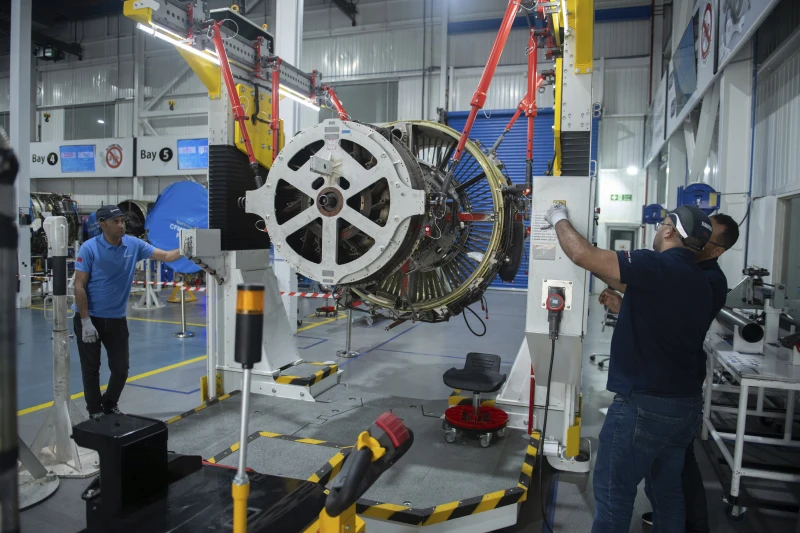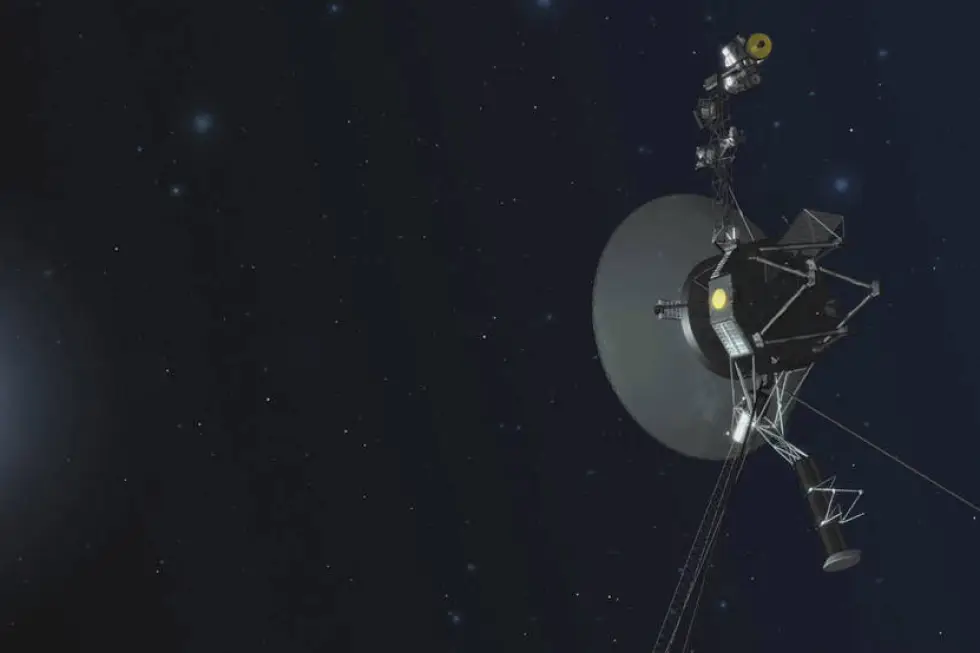In the vast expanse of the cosmos, where distances are measured in billions of miles and communication takes hours, the story of Voyager 1 stands as a testament to human perseverance and technological prowess.
The recent episode of Voyager 1 losing its ability to transmit understandable data, only to be revived through the ingenuity of NASA’s Jet Propulsion Laboratory, serves as a reminder of the challenges and triumphs inherent in deep space exploration.
The journey of Voyager 1 began in 1977, when it was launched with the mission to study the outer planets of our solar system, namely Jupiter and Saturn.
Over the decades, this stalwart spacecraft has surpassed all expectations, venturing beyond the confines of our solar system into the uncharted territory of interstellar space.
Despite its age and the immense distances it has traversed, Voyager 1 has continued to beam back invaluable data, expanding our understanding of the cosmos.
However, space is unforgiving, and even the most resilient of machines can encounter setbacks. Last November, Voyager 1’s communication system faltered, leaving NASA engineers puzzled as they grappled with a malfunctioning computer chip.
The loss of coherent data transmission was a sobering reminder of the fragility of technology in the harsh environment of space.
Undeterred by this setback, the dedicated team at NASA’s Jet Propulsion Laboratory sprang into action, embarking on a mission to troubleshoot and resolve the issue plaguing Voyager 1.
Through meticulous analysis and innovative problem-solving, they identified the faulty chip and devised a workaround that enabled the spacecraft to resume sending engineering updates back to Earth.
The success of this endeavor was a cause for celebration at the Jet Propulsion Laboratory, marking a triumph of human intellect and resourcefulness over the vast distances and challenges of space.
The painstaking efforts to restore Voyager 1’s communication capabilities exemplify the unwavering commitment of the scientific community to push the boundaries of knowledge and exploration.
As we marvel at the remarkable resilience of Voyager 1, we are reminded of the enduring spirit of curiosity and exploration that drives humanity to reach for the stars.
The spacecraft’s ongoing mission in interstellar space serves as a beacon of inspiration, symbolizing our collective quest to unravel the mysteries of the universe and expand the frontiers of human knowledge.
In conclusion, the saga of Voyager 1 stands as a testament to the indomitable human spirit and the remarkable achievements made possible through collaboration, innovation, and perseverance.
As we continue to push the boundaries of space exploration, let us draw inspiration from the resilience of Voyager 1 and strive to emulate its unwavering determination to explore the unknown and unlock the secrets of the cosmos.
In the vast expanse of the cosmos, where distances are measured in billions of miles and communication takes hours, the story of Voyager 1 stands as a testament to human perseverance and technological prowess.
The recent episode of Voyager 1 losing its ability to transmit understandable data, only to be revived through the ingenuity of NASA’s Jet Propulsion Laboratory, serves as a reminder of the challenges and triumphs inherent in deep space exploration.
The journey of Voyager 1 began in 1977, when it was launched with the mission to study the outer planets of our solar system, namely Jupiter and Saturn.
Over the decades, this stalwart spacecraft has surpassed all expectations, venturing beyond the confines of our solar system into the uncharted territory of interstellar space.
Despite its age and the immense distances it has traversed, Voyager 1 has continued to beam back invaluable data, expanding our understanding of the cosmos.
However, space is unforgiving, and even the most resilient of machines can encounter setbacks. Last November, Voyager 1’s communication system faltered, leaving NASA engineers puzzled as they grappled with a malfunctioning computer chip.
The loss of coherent data transmission was a sobering reminder of the fragility of technology in the harsh environment of space.
Undeterred by this setback, the dedicated team at NASA’s Jet Propulsion Laboratory sprang into action, embarking on a mission to troubleshoot and resolve the issue plaguing Voyager 1.
Through meticulous analysis and innovative problem-solving, they identified the faulty chip and devised a workaround that enabled the spacecraft to resume sending engineering updates back to Earth.
The success of this endeavor was a cause for celebration at the Jet Propulsion Laboratory, marking a triumph of human intellect and resourcefulness over the vast distances and challenges of space.
The painstaking efforts to restore Voyager 1’s communication capabilities exemplify the unwavering commitment of the scientific community to push the boundaries of knowledge and exploration.
As we marvel at the remarkable resilience of Voyager 1, we are reminded of the enduring spirit of curiosity and exploration that drives humanity to reach for the stars.
The spacecraft’s ongoing mission in interstellar space serves as a beacon of inspiration, symbolizing our collective quest to unravel the mysteries of the universe and expand the frontiers of human knowledge.
In conclusion, the saga of Voyager 1 stands as a testament to the indomitable human spirit and the remarkable achievements made possible through collaboration, innovation, and perseverance.
As we continue to push the boundaries of space exploration, let us draw inspiration from the resilience of Voyager 1 and strive to emulate its unwavering determination to explore the unknown and unlock the secrets of the cosmos.
The recent news of Voyager 1 reconnecting with NASA after months of silence serves as a poignant reminder of the remarkable journey this spacecraft has undertaken since its launch in 1977.
In the vast expanse of space, where distances are incomprehensible and communication is a challenge, Voyager 1’s resilience and the dedication of the team at NASA’s Jet Propulsion Laboratory are truly commendable.

Voyager 1’s initial mission to study the outer planets of our solar system was a groundbreaking endeavor that has since evolved into a pioneering exploration of interstellar space.
Despite its age and the countless obstacles it has encountered along the way, Voyager 1 has continued to transmit valuable data back to Earth, expanding our knowledge of the universe.
The recent setback faced by Voyager 1, where its communication system failed, was a stark reminder of the fragility of technology in the harsh environment of space.
However, the swift response and innovative problem-solving skills demonstrated by the team at NASA’s Jet Propulsion Laboratory are a testament to human ingenuity and perseverance.
The successful revival of Voyager 1’s communication capabilities is not just a technical achievement, but a symbol of humanity’s insatiable curiosity and determination to explore the unknown.
The collaborative efforts of scientists and engineers to overcome challenges in space exploration exemplify the best of human endeavor and the pursuit of knowledge.
As we reflect on Voyager 1’s journey and its recent triumph, we are reminded of the boundless potential of human exploration and the resilience of our spirit in the face of adversity.
Voyager 1’s ongoing mission in interstellar space serves as an inspiration for future generations to continue pushing the boundaries of space exploration and unraveling the mysteries of the cosmos.
In conclusion, Voyager 1’s story is a testament to the indomitable human spirit and the incredible achievements that can be accomplished through collaboration, innovation, and perseverance.
Let us draw inspiration from Voyager 1’s resilience and continue to strive for new discoveries and breakthroughs in the realm of space exploration.
